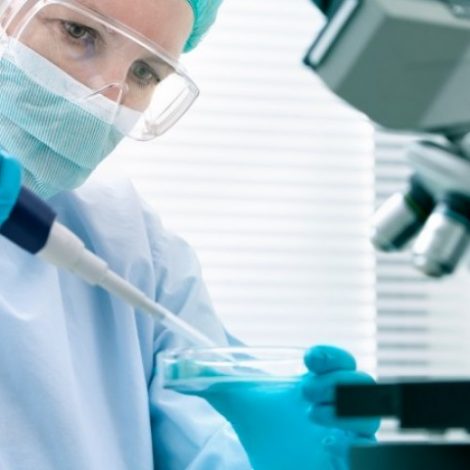Blocking Protein That Hinders Muscle Growth Possible Way of Treating LGMD1, Mouse Study Suggests

Lithium chloride — once used as table salt — improved muscle size and strength in mouse models of limb-girdle muscular dystrophy D1 (LGMD1) by blocking a protein that is overactive in some people with this disease.
Inhibiting this protein may be a way of correcting muscle weakness in these patients, findings in the preclinical study “Lithium chloride corrects weakness and myopathology in a preclinical model of LGMD1D” suggest. The report was published in the journal Neurology Genetics.
A few years ago, a research team led by Conrad C. Weihl, MD, PhD, at Washington University School of Medicine in St. Louis, t found that variations in the DNAJB6 gene were one of the many genetic causes of LGMD1, resulting in progressive muscle wasting with childhood- or adult-onset.
Since, it has not been clear why an alteration to this gene causes muscle atrophy in the limb-girdle regions of the body, muscles around the shoulders and hips.
To possibly answer this, Weihl and lead study authors Andrew Findlay, MD, and Rocio Bengoechea, PhD — both with the school’s department of neurology — genetically engineered mice to lack the DNAJB6 gene.
Contrary to what the researchers expected, loss of this gene made muscle fibers grow larger than normal, rather than drive muscle loss.
To explain this mystery, researchers looked at what happened to muscles in mouse models carrying a DNAJB6 variant, or mutation, found in LGMD1 patients. These mice developed symptoms of progressive muscle weakness in adulthood, much like patients.
Join our MD forums: an online community especially for patients with Muscular Atrophy.
Muscle fibers from these mice showed that such mutations overactivated a protein called glycogen synthase kinase 3 beta (GSK3beta) that suppresses muscle growth. When they blocked this protein by treating the mice with lithium chloride, they saw a significant recovery of strength and muscle mass in the mice.
“Before treatment, mutant mice had roughly one-fifth the strength of the normal mice,” Findlay said in a press release. “After a month of treatment, they improved to 75 percent of the normal mice. It’s a big jump.”
“Our results suggest that LGMD1D-associated DNAJB6 mutations inhibit myogenic [muscle growth] signaling through augmented GSK3β activity,” the researchers wrote.
“Further studies are required to clarify, however, that LiCl [lithium chloride] may be an ideal therapeutic option for LGMD1D.”
Lithium chloride was once available as a table salt but banned in the 1940s, when doctors realized excessive use on food could be fatal. But other forms of lithium, like lithium carbonate and lithium citrate, are currently used to treat some psychiatric conditions, so it is possible that a safe form of lithium can be found to treat the rare muscular dystrophy, the release states.
“I don’t want people to go out and take lithium chloride right now,” Findlay stressed. “We’ve shown that this protein is a promising therapeutic target, but more work needs to be done.”
Before a potential treatment targeting GSK3beta might be tested, however, the researchers say it is important to better understand how LGMD naturally progresses. The disease is so rare that is not clear how disease course and the loss of muscle strength varies across people whose illness is caused by distinct genes.
“We have a therapeutic target, but we don’t fully understand how patients progress when they’re not treated,” Weihl said, a reference to understanding a disease’s natural history. “We need to understand as many people with this rare disease as possible, so when we do start testing an investigational drug, we can be confident that it is changing the course of the disease.”
Weihl and Findlay, with colleagues across the U.S. and U.K., are now planning a large-scale study of LGMD patients with disease-causing mutations in any gene, in order to map disease progression. Such a map could be crucial to clinical trials of possible treatments.






